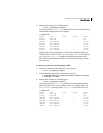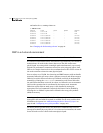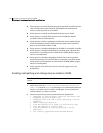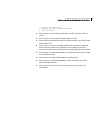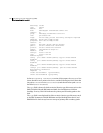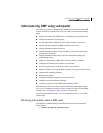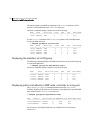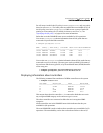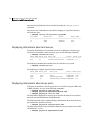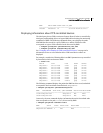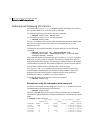
137Administering dynamic multipathing (DMP)
Displaying DMP database information
Displaying DMP database information
You can use the vxdmpadm command to list DMP database information and
perform other administrative tasks. This command allows you to list all
controllers that are connected to disks, and other related information that is
stored in the DMP database. You can use this information to locate system
hardware, and to help you decide which controllers need to be enabled or
disabled.
The
vxdmpadm command also provides useful information such as disk array
serial numbers, which DMP devices (disks) are connected to the disk array, and
which paths are connected to a particular controller, enclosure or array port.
For more information, see “Administering DMP using vxdmpadm” on page 139.
Displaying the paths to a disk
The vxdisk command is used to display the multipathing information for a
particular metadevice. The metadevice is a device representation of a particular
physical disk having multiple physical paths from one of the system’s HBA
controllers. In VxVM, all the physical disks in the system are represented as
metadevices with one or more physical paths.
You can use the
vxdisk path command to display the relationships between the
device paths, disk access names, disk media names and disk groups on a system
as shown here:
# vxdisk path
SUBPATH DANAME DMNAME GROUP STATE
c1t0d0 c1t0d0 mydg01 mydg ENABLED
c4t0d0 c1t0d0 mydg01 mydg ENABLED
c1t1d0 c1t1d0 mydg02 mydg ENABLED
c4t1d0 c1t1d0 mydg02 mydg ENABLED
.
.
.
This shows that two paths exist to each of the two disks, mydg01 and mydg02,
and also indicates that each disk is in the ENABLED state.
To view multipathing information for a particular metadevice, use the following
command:
# vxdisk list devicename
For example, to view multipathing information for c1t0d3, use the following
command:
# vxdisk list c1t0d3
Typical output from the vxdisk list command is as follows:
Device: c1t0d3





